Previously: The Atlanta Blood House.
Do you know about Doveland, Wisconsin? It’s a town — well, no. That’s not quite correct. It was a town. A small one, more rural than suburban, although no one is really sure where within the state of Wisconsin it was located. No maps of it have ever been unearthed; indeed, it seems to have been scrubbed from the historical record. Doveland, you see, allegedly disappeared sometime in the late 1980s or early 1990s — but no one is really sure when it happened, or where the town went.
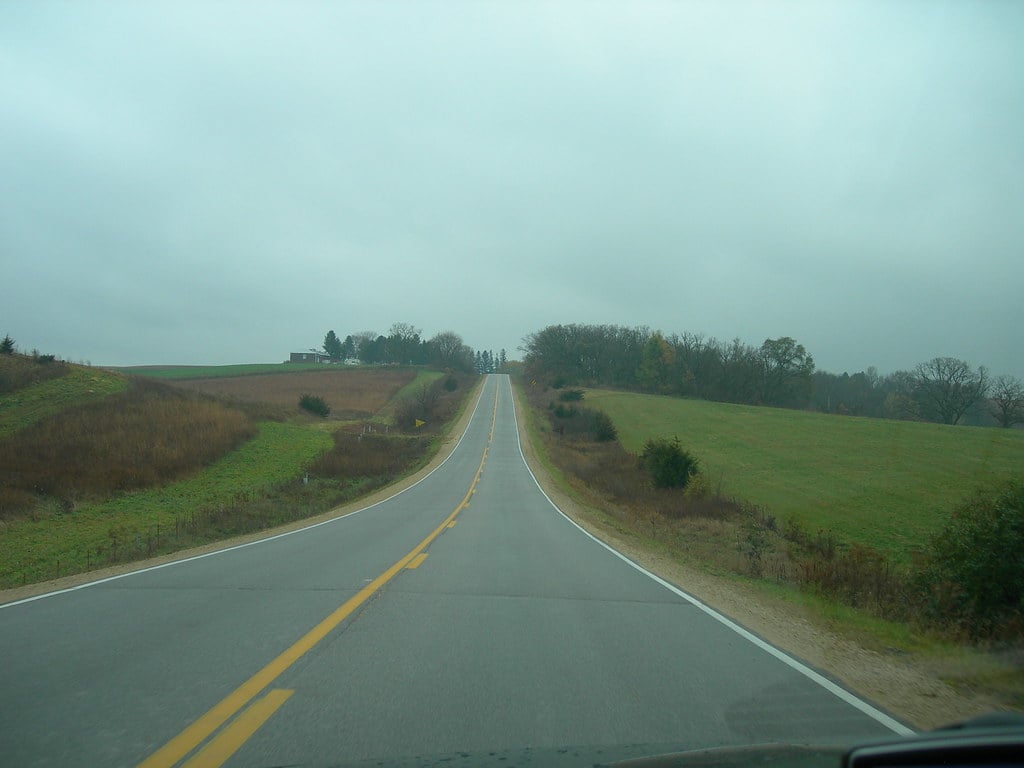
Most locals don’t even remember Doveland.
Not even when you’d think they would.
But if you look in the right places, you’ll find them — the folks who are asking the questions, and looking for the answers:
What happened to Doveland, Wisconsin?
Where did it go?
And — most importantly — did it ever really exist in the first place?
[Like what you read? Check out Dangerous Games To Play In The Dark, available from Chronicle Books now!]
There’s a short answer to the whole mystery, of course: Doveland, Wisconsin is almost certainly a myth, like Urkhammer, Iowa and Ashley, Kansas. The real conundrum, though, is about where the myth comes from, and when it originated. And that mystery? Well, that’s one that… may not have an easily distinguishable answer.
Doveland might be a piece of internet lore.
Or it might not be. It might be older.
We don’t really know.
What We Talk About When We Talk About Doveland
Here is what we know about Doveland:
A post from a now-deleted (and, uh… questionable, from what I can tell) Tumblr that’s been preserved thanks to a reblog from a different, still-extant Tumblr contains most of the information available about the Doveland, Wisconsin legend. I’ll quote the post at length, in the event that the Tumblr I found the reblog on eventually gets erased from the internet, too:
“Anyone here ever heard about Doveland, Wisconsin?
Okay so this is just like golf rumors, where there’s basically no information available online. Even less than golf rumors, in fact.
Supposedly there was a small town in Wisconsin called Doveland, that just up and disappeared sometime in the late 1980s/early 1990s. One day the town was there, the next… it wasn’t. Every man, woman, and child vanished into thin air.
Nobody today remembers Doveland. There is allegedly tourist memorabilia from the town that still exists – t-shirts, mugs, postcards, etc. – but the town is gone. It was also removed from maps and razed by the powers-that-be, either to cover up what happened, or out of fear that it might happen again.
What’s really weird is that most locals don’t remember Doveland either, which is strange because in rural Wisconsin communities are closely knit, just like every other sparsely populated area of the country. The most likely explanation is ‘it never existed dumbass’ but let’s carry on just a bit more.
Here are the theories postulated as to where it went:
- The town just never existed and is just internet bs probably sourced from and ending with /x/ LARPing antics
- The locals up and left due to untenable circumstances (sickness, lack of economy w/e)
- A government project/experiment gone wrong killed everyone, then they razed it to the ground to cover their screw-up
- The town fell into another dimension, or we shifted to a reality where the town had never existed; think Mandela Effect.”
The post then goes on to note that “searching for ‘Doveland, Wisconsin’ on google only yields some old threads on /x/ where they’re just as confused as I am, but more mysteriously, two articles on missing people in Wisconsin.” Those articles are from the Appleton, Wis.-area newspaper the Post Crescent.
The post then concludes, “Most of the evidence points to it being just an urban legend, but it wouldn’t be the first mass-disappearance… Roanoke, Lake Anjikuni, Hoer Verde, and several other small localities are confirmed as having disappeared.”
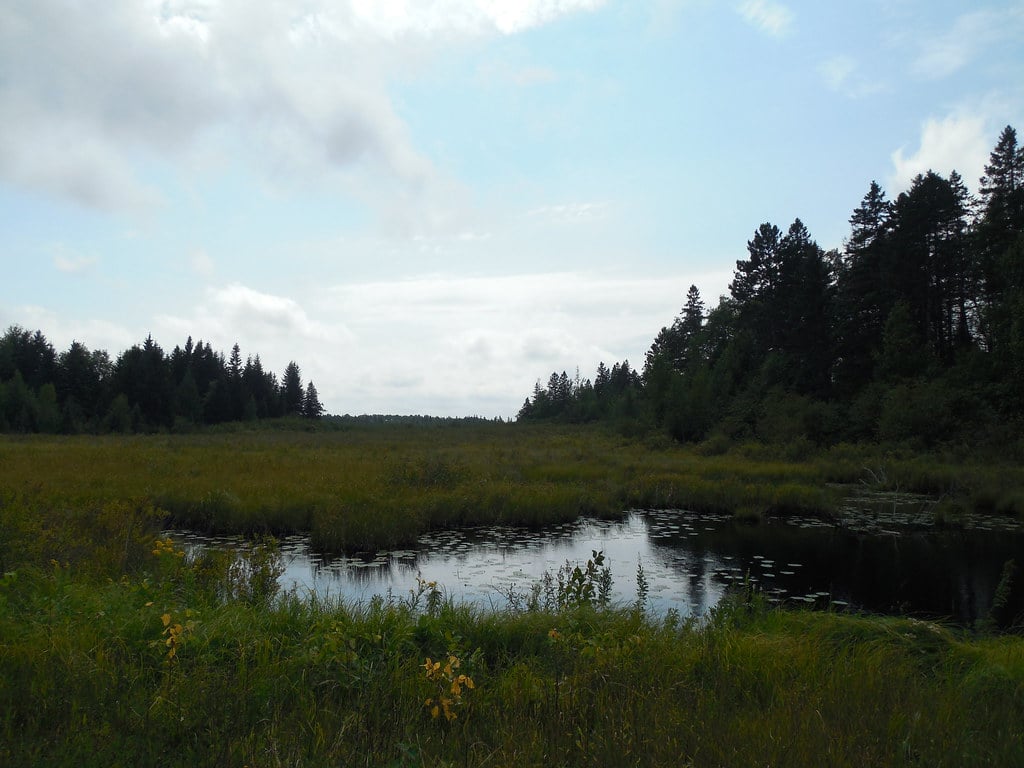
The aforementioned posts on 4chan’s /x/ board are, as this Tumblr post notes, scant in detail. They’re largely dated 2017 and onward, and occasionally prompted by the appearance of Doveland on conspiracy-themed versions of those iceberg charts that have become so popular recently. The posts consist of comments like, “Doveland: Explain” and “Doveland is apparently a town in Wisconsin that disappeared some time [sic] in the 1990s which has led to conspiracy theories about the place,” although every so often, someone will write something like, “Town in northwest WI that disappeared in the early ‘90s. I grew up around Rhinelander and I distinctly remember my dad wearing a t-shirt from a bar that said ‘Behren’s Pub, Doveland Wisconsin’ many times when I was a kid.” There’s a piece of copypasta that tends to pop up with some degree of frequency in these posts, as well: “You live in Wisconsin? Just ask around, most people born before the ‘90s will remember the city of Doveland, some even have shirts, mugs, etc. that reference it.”
So: Nothing new, but reiteration of the existence of the town and legend.
A small amount of additional information can be found at the Obscurban Legend wiki page on Doveland, mostly in the form of a few quotes allegedly from people who either claim to remember the town (however vaguely) or who think they know what happened to it.
A bunch of them back the idea of the town having been related to the military in some way. “Doveland was very real,” one asserts. “My father used to mention it occasionally before he passed, and the only reason I remember it is because I found it ironic that a town named ‘Doveland’ was populated by almost exclusively military personnel and their families.” The source of this quote goes on to say, “If I remember correctly, the town was built as part of ‘Project Sanguine’ in the mid to late ‘60s. Maybe everyone left when the project was cancelled, but I thought something went very wrong. You can only dig up that much turf for so long before you’re bound to have problems.” They promised that the next time they visited their family, they would “dig around for a shirt” from Doveland.
A second quote repeats much the same information: “I just learned of all the noise surrounding Doveland, and I think I can add some insight,” the quote says. “Doveland was a small town in Wisconsin that housed a lot of military families. My father lived there for a year or two and spoke of it occasionally. The main thing I remember is that it had to do with ‘Project Sanguine’ in the early 60’s.” However, this quote also goes to note that the reason for the town’s alleged disappearance wasn’t “X-Files type stuff”; rather, it’s thought that Doveland was “destroyed after an incident” of some kind. “I thought they were digging up a ton of land for something and they flooded the town or something, but this is a rehashed secondhand memory from years ago,” the quote reads.
But another quote refutes the idea of Doveland being military. “The locations for Doveland don’t coincide with Project Sanguine (aka Project ELF) due to the bedrock,” it states. “There is nothing sci-fi about Sanguine and nothing that could cause an accident where a down would disappear, but there have been studies about the possible increase in cancer due to the power and frequencies used at these sites.”
One last quote put it succinctly: “As someone who has lived in various places in Wisconsin for over 30 years and has been in the Army, never once has any single person ever mentioned Doveland.”
Beyond all that, though — which, when you get down to it, doesn’t amount to much — there isn’t really anything else to find about Doveland. All we know is that allegedly, it existed; then, one day, allegedly, it suddenly did not.
So where’s the line between fact and fiction?
A Kernel Of Truth
Here’s what’s real: Project Sanguine. Project ELF, too. In fact, Project Sanguine is perhaps best thought of as the blue sky version of Project ELF — the Platonic ideal version, the version that arose from brainstorming without the need to consider limitations. Both were U.S. Navy projects intended to facilitate communication with deep-sea submarines — although one never quite got off the ground, and the other has since been declared obsolete.
Project Sanguine was first proposed in 1968. The idea was, as Vox put it in an explainer in 2015, “to bury a gigantic grid of cables under roughly 41 percent of the state of Wisconsin in order to turn its bedrock into the world’s largest radio antenna.” The cables would, with the aid of 100 underground power plants, generate extremely low-frequency (ELF) waves, with the end result being a system capable of surviving a nuclear attack that could send messages and orders —although not receive them — to nuclear submarines anywhere in the world.
But there was a problem: Money. Project Sanguine would have been enormously expensive to build, and so it was shelved. What was concocted instead was Project ELF, so named for the variety of waves it was meant to transmit communiqué over. Constructed in 1969 with testing beginning 1982, Project ELF encompassed two transmitters — one at Clam Lake in Wisconsin and one at Republic in the Upper Peninsula of Michigan — which could operate together as one large antenna, or independently as two smaller ones. Unlike the plans for Project Sanguine, Project ELF’s cables were strung above ground; as such, the system wasn’t built to survive nuclear attacks. It operated between 1989 and 2004, when, due to factors ranging from constant complaints from residents to the limitations of ELF as a communication method, the project was shut down.
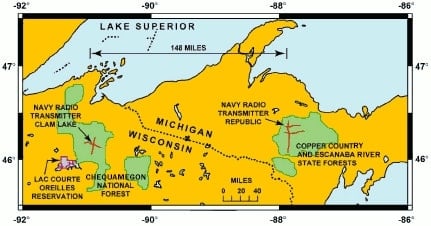
So how does Doveland, Wisconsin fit in with Projects Sanguine and ELF? In a few ways, although it’s worth noting that the potential connections weren’t introduced into the story until it had already been circulating for a bit. The quotes collected by Obscurban Legend suggest that the town was flooded — either accidentally or on purpose — during the construction of Project Sanguine.
Of course, there’s a problem with that idea: Project Sanguine never progressed to the construction stage. It was killed off before anything even remotely close to breaking ground happened; there was no digging, and therefore there is no way the town could have been flooded by the act of digging. And Project ELF wasn’t underground at all, so the story doesn’t line up with the facts there, either.
Indeed, upon closer examination, there are a number of holes in the story. Some of them may be documentation errors, while others may be pure fabrication. Either way, it’s when you start to look a little closer at everything that it all starts to fall apart.
Cracks In The Story
Let’s start with when talk of Doveland first arrived online — because, it turns out, much of the water the story holds is dependent on that detail.
It’s sometimes said that the earliest known mention of Doveland on the internet occurred in 2015. The Obscurban Legend wiki article points to a news article about missing Wisconsinites published that year as as evidence to that fact — but there is nothing in the article about Doveland at all. There’s an explanation for how it got erroneously included here, though: It’s because of an error made by the writer of that Tumblr post — y’know, the one that summarizes most of what we know about Doveland and its alleged existence.
The Tumblr post, you’ll recall, notes that “searching for ‘Doveland, Wisconsin’ on Google only yields some old threads on /x/ where they’re just as confused as I am, but more mysteriously, two articles on missing people in Wisconsin.” As a reminder, both of those articles are from the Post Crescent; one of them is the 2015 article cited by Obscurban Legend. (For the curious, the other is dated 2017.) The confusion of the Tumblr post implies that the original poster also found there to be no mention of Doveland in those articles — that is, the writer seems unsure why Google included them in the search results, given that one of the key search terms is nowhere within them.
It is true, even now in 2022, that searching for Doveland, Wisconsin on Google brings up the 2015 Post Crescent article on the first page of results. But that’s only the case when you don’t use any modifiers to narrow down the search: When you put Doveland in quotation marks, or both Doveland and Wisconsin in quotation marks, or the entire phrase “Doveland, Wisconsin” in quotation marks — quotation marks being a modifier that will tell Google to look for results that have an exact match for the words or phrases around which they’re placed — then this result disappears.
I mention this because it provides some important information about the Tumblr post — namely, that its writer seems to have misunderstood how search engines work. They aren’t perfect; they can and will return results that aren’t actually relevant to what you’re hoping to find, and they’ll do so for a wide variety of reasons, including how specific you are about what you tell it to look for. (This is why understanding search modifiers and how to use them is an essential research skill.) The trouble is, once this Tumblr post pointed to those two articles as connected to the mystery of Doveland, so did everyone who looked into it afterwards — and the vast majority of them seem not to have actually vetted the articles for relevancy before linking to them, as well.
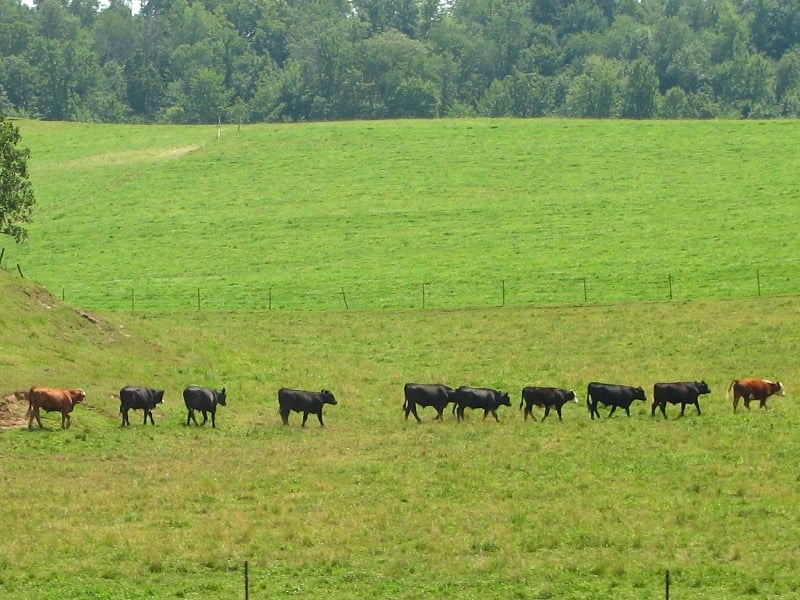
The bottom line: These two articles are almost certainly errors on Google’s part and should not be considered connected to the Doveland mystery. This also means that pinning 2015 as the year discussion of Doveland first appeared online is incorrect.
In fact, I haven’t found anything about Doveland dated earlier than 2017. The earliest posts on /x/ featuring Doveland only go back to 2017. I’m unable to pin a date to the original Tumblr post, as the entire site has been deleted — but given that it includes a link to an article dated 2017, then it, too, couldn’t have existed prior to that year. And all the quotes and soundbytes documented at Obscurban Legend? I tracked down the original sources for as many of them as they could — and again, I found nothing dated earlier than 2017. Most of them, in fact, are from 2018: One, for instance, is from a Reddit comment dated 2018, while several others are from the comments section of an eight-minute YouTube video, also published in 2018, that’s an excerpt from a larger podcast episode about the legend. The commenter responsible for two of those comments also added them directly to the Obscurban Legend page in October of 2020.
Could the legend have been circulating locally before 2017? Of course; indeed, some of the quotations from people insisting they’d heard older relatives or what have you discussing it point to that possibly being the case. But then again, all we have to go on is what these folks — who, really, are just randos on the internet (as are we all) — are saying. There’s nothing to back it up — no paper trail, no historical record, nothing. As a result, we must necessarily take it with a grain of salt.
And, from within that framework, I have a suspicion that the legend of Doveland isn’t a local legend at all, but originated in one of two places, both online: Either on 4chan, or in that Tumblr post.
But I can’t prove it. (And yes, it bugs me that I can’t.)
Absence Of Evidence Is Not Evidence Of Absence
The trouble is — like all of the other theories and ideas about Doveland and its existence or non-existence that are floating around out there — I can’t track the trail all the way to those sources. I can’t see when the original Tumblr post was published, because it no longer exists; meanwhile, 4chan archives are regularly expunged or otherwise made inaccessible (what’s the point of an anonymous message board if it’s not also somewhat ephemeral?), so there’s only so far I can go down that rabbit hole, too.
All I can do is point to the lack of evidence in other places — the lack of anything available on the internet about it before 2017, its absence from maps produced during times when Doveland should have been on them, and so on and so forth — as suggestive of it having been both a recent invention and one that came from the depths of the internet.
Absence, of course, is not proof positive. This statement goes both ways: While I would absolutely respond to anyone who says the lack of maps or historical documents depicting Doveland is evidence that Doveland did exist, and there’s a coverup going on — that these maps and documents were destroyed — by pointing out that they’re falling prey to a logical fallacy, I likewise can’t just say, “Well, we don’t have anything written online about Doveland prior to 2017, therefore the idea of it didn’t exist before then” without falling prey to a logical fallacy myself.
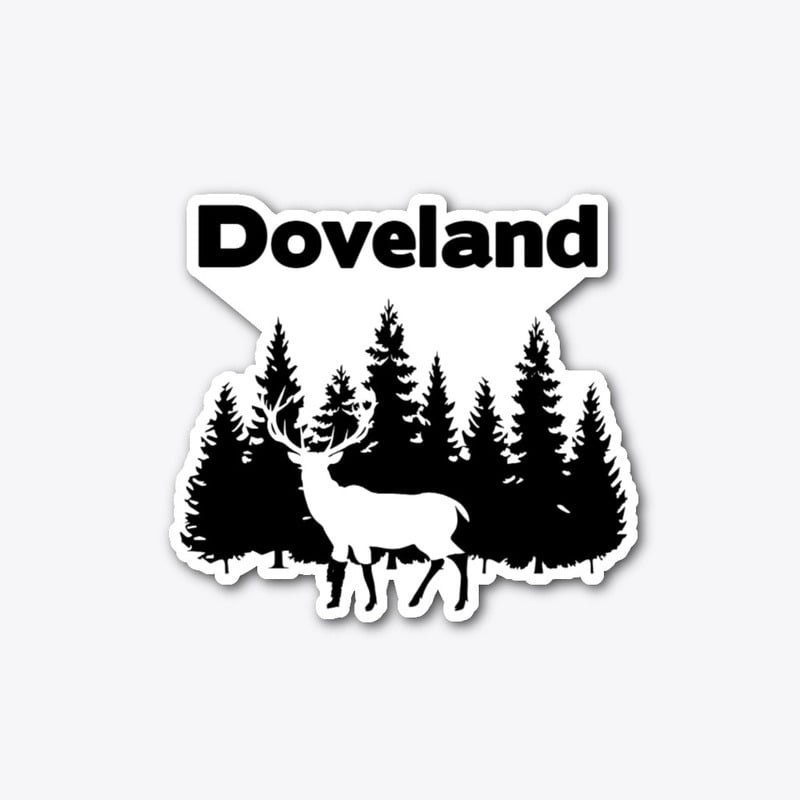
For what it’s worth, the various “souvenirs” from Doveland that are available to buy online currently are likely not authentic. It’s easier than ever to just design a shirt and make it available for purchase these days, thanks to services like TeeSpring and Zazzle; you don’t even need to be human to design a T-shirt and offer it for sale: It’s no secret that tons of algorithm-generated products have flooded the market in recent years. (CW at the next link: r*pe) Remember that Amazon Marketplace debacle from 2013? That was the fault of algorithms.
And so, the story of Doveland, Wisconsin remains unresolved. Personally, I think it’s a legend that was born sometime in the late 2010s; others, however, may feel otherwise.
Just… don’t try to visit it.
There’s nothing to find there now — wherever “there” is meant to be.
If there ever was at all.
***
Follow The Ghost In My Machine on Twitter @GhostMachine13 and on Facebook @TheGhostInMyMachine. And for more games, don’t forget to check out Dangerous Games To Play In The Dark, available now from Chronicle Books!
[Photos via corinnamakris, Dougtone, Emily TT Sullivan/Flickr, available under CC BY 2.0 and CC BY-SA 2.0 Creative Commons licenses; public domain/Wikimedia Commons; Ecks 2the Wall/TeeSpring]